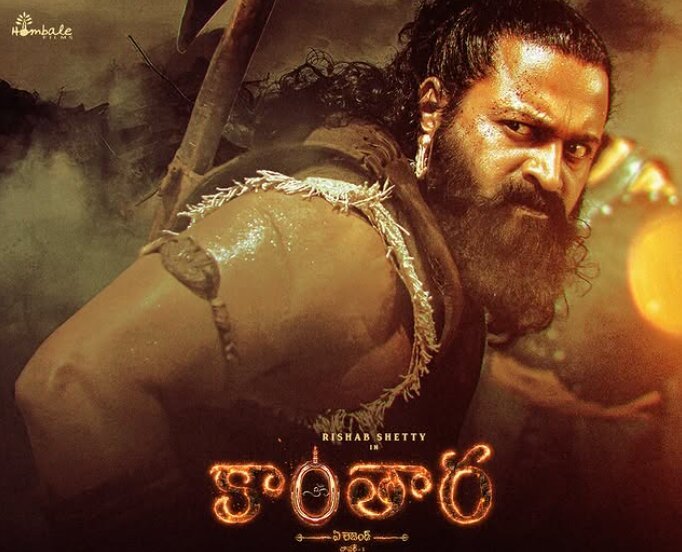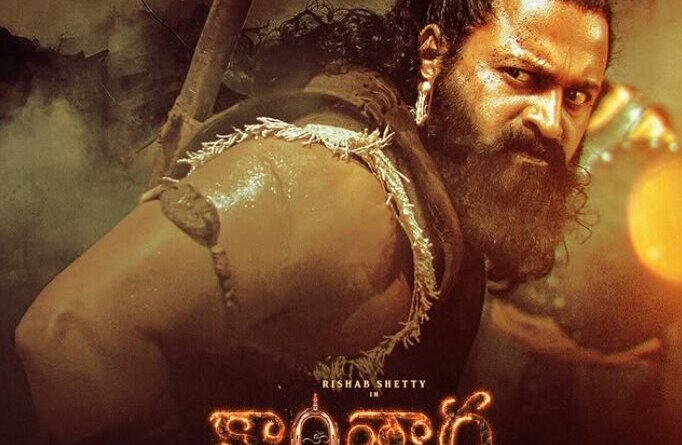Kantara Chapter 1 Movie Review

Cast – Rishab Shetty, Jayaram, Rukmini Vasanth, Gulshan Devaiah, Pramod Shetty, Rakesh Poojari, Prakash Thuminad, Deepak Rai Panaje, Hariprashanth M G, Shaneel Gautham
Directors – Rishab Shetty
Producers – Vijay Kiragandur
Banner – Hombale Films
Music – B Ajaneesh Loknath
Runtime – 2 hours 25 minutes
Genre – Action, Mythological Thriller
Release Date – 2nd October 2025
Background
Kantara: Chapter 1 arrives as a prequel to the 2022 blockbuster, diving deeper into the mythos of Panjurli Daiva and the ancestral fury that shaped the forest-bound village. Set in the 4th century, the film explores the origin of divine wrath and the spiritual lineage that binds man and nature. Rishab Shetty returns not just as the lead but also as the creative force behind the camera, crafting a tale that’s both rooted and raging. The backdrop is dense with cultural symbolism, tribal rituals, and the eternal conflict between greed and dharma. The film’s visual grammar leans heavily on native textures, smoky forests, and fire-lit ceremonies. The soundscape is primal, echoing chants and percussion that stir the soul. The narrative is steeped in folklore, yet it pulses with cinematic urgency. Kantara: Chapter 1 doesn’t just tell a story—it invokes a legend.
Plot
The story unfolds around Shiva’s ancestor, a fierce warrior chosen by the deity Panjurli to protect the sacred land. When a tyrannical king attempts to seize the forest for personal gain, divine intervention manifests through the possessed warrior. The film traces the transformation of a reluctant protector into a vessel of rage and justice. As the conflict escalates, blood spills, spirits awaken, and the forest becomes a battleground of faith. The climax is a ritualistic eruption of fury, where man and god merge in a dance of destruction.
Artists Performances
Rishab Shetty delivers a thunderous performance, channeling both vulnerability and divine rage with conviction. His physicality and emotional depth anchor the film’s spiritual core. Sapthami Gowda brings grace and grit to her role, portraying a tribal healer with quiet strength. Kishore, as the antagonist, is menacing without resorting to caricature. Achyuth Kumar adds gravitas in a brief but impactful role. The supporting cast, largely composed of native actors, lends authenticity to the tribal setting. The ensemble’s commitment to dialect, body language, and ritualistic expression elevates the film’s realism.
Technicalities
The cinematography by Arvind S Kashyap is a visual feast—earthy tones, fire-lit frames, and sweeping forest shots dominate the palette. B Ajaneesh Loknath’s music is haunting, blending tribal rhythms with orchestral intensity. The sound design amplifies the spiritual tension, especially during possession sequences. Editing is crisp, maintaining pace without sacrificing mood. The production design recreates ancient Karnataka with meticulous detail. Costumes reflect tribal aesthetics, with natural fabrics and symbolic accessories. VFX is sparingly used but effective, especially in divine transformation scenes. The choreography of rituals and combat is raw and immersive.
Positives
- Rishab Shetty’s commanding performance and direction
- Authentic portrayal of tribal culture and rituals
- Powerful sound design and music that elevate emotional beats
- Visually stunning cinematography that captures myth and nature
Negatives
- Occasional pacing dips in the second act
- Limited screen time for key supporting characters
- The opening sequence suffers from muffled audio
Analysis
Kantara: Chapter 1 is not just a film—it’s a spiritual experience wrapped in cinematic intensity. Rishab Shetty’s dual role as actor and director brings a singular vision to life, one that reverberates with ancestral echoes and divine fury. The film opens with a slow burn, establishing the tribal ecosystem and the spiritual hierarchy that governs it. The first act is rich in exposition, introducing the forest, the deity, and the warrior’s lineage. As the narrative progresses, the tension between man’s greed and nature’s sanctity becomes palpable. The antagonist’s arrival disrupts the balance, triggering a series of events that lead to divine intervention.
Shetty’s portrayal of the possessed warrior is the film’s emotional and visual high point. His transformation scenes are choreographed with ritualistic precision, blending dance, rage, and spiritual ecstasy. The camera lingers on his eyes, his sweat, and the fire around him—creating a trance-like effect. The second act delves into the warrior’s internal conflict, his resistance to becoming a vessel, and the burden of divine duty. Sapthami Gowda’s character acts as the emotional anchor, guiding him through healing and acceptance.
The film’s mythological depth is layered—references to Bhoota Kola, Panjurli Daiva, and ancient Kannada folklore are woven seamlessly into the plot. The screenplay avoids preachiness, instead allowing the visuals and performances to convey spiritual weight. The antagonist, though human, represents a larger evil—greed, ego, and the desecration of sacred land. His confrontation with the possessed warrior is staged like a ritual, not a battle.
Technically, the film is a triumph. The sound design deserves special mention—chants, drums, and ambient forest sounds create an immersive experience. The music doesn’t just accompany scenes; it drives them. The cinematography captures both the serenity and savagery of the forest. The use of natural light, fire, and shadows adds texture to the storytelling.
Despite its strengths, the film isn’t without flaws. The pacing in the middle stretches a few scenes unnecessarily. Some characters, especially tribal elders, are underutilized. The mythological references, while rich, may alienate viewers unfamiliar with the region’s folklore. However, these are minor blemishes in an otherwise compelling narrative.
Kantara: Chapter 1 succeeds in expanding the universe of the original while deepening its spiritual core. It’s a film that respects its roots, challenges its characters, and rewards its audience with a visceral experience. The climax, a fiery dance of possession and justice, is among the most memorable sequences in recent Indian cinema.
Final Verdict :- A rooted mythological thriller that burns bright with divine rage
Rating :- 3/5




